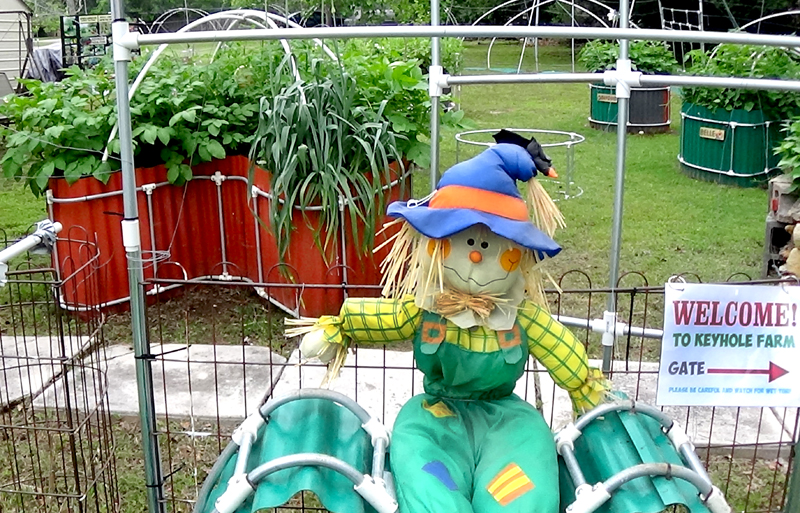 My plants are doing exceedingly well at this stage, as this is posted on April 23.
My plants are doing exceedingly well at this stage, as this is posted on April 23.
Our annual keyhole garden tour occurred on Friday (April 21) and just prior to its opening we shot some video of our keyhole gardens at that juncture, a pre-tour walk-through. I uploaded parts of the video onto a YouTube site and here is the link if you want to view it. https://youtu.be/94mJZArZfkQ
Here are a few of the still photos taken during the walk-through, including one of the scarecrow at the entrance gate with keyhole gardens in the background and a few close-ups of the plants crowded into the keyhole gardens. Just click on the image to enlarge.
I am still amazed at the growth I witness every morning when I walk out to journey through the keyhole gardens. It’s as if the plants yawn and stretch their branches during the night which becomes visible in daylight.
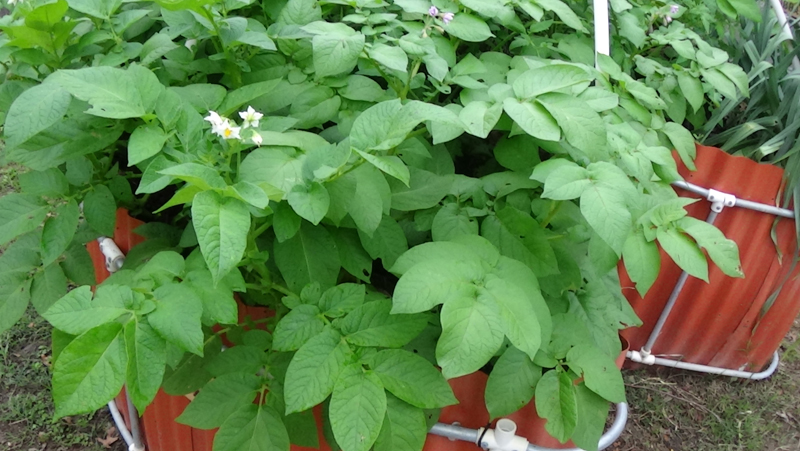 Planted was a huge variety of plants this year, but a few dominate right now, including tomatoes, onions, garlic, potatoes, black-eyed peas, several varieties of green beans, early peas, pumpkins, corn, carrots, and jalapenos. Especially thick are the potatoes. Last year, my dominant crop was green beans. We filled our freezer quite early and I was spending three hours a day harvesting them, so this year my main crop is potatoes.
Planted was a huge variety of plants this year, but a few dominate right now, including tomatoes, onions, garlic, potatoes, black-eyed peas, several varieties of green beans, early peas, pumpkins, corn, carrots, and jalapenos. Especially thick are the potatoes. Last year, my dominant crop was green beans. We filled our freezer quite early and I was spending three hours a day harvesting them, so this year my main crop is potatoes.
It is never too late to get started with your own keyhole garden. Many crops are seasonal, so depending upon your location there is usually something to plant to match the weather.
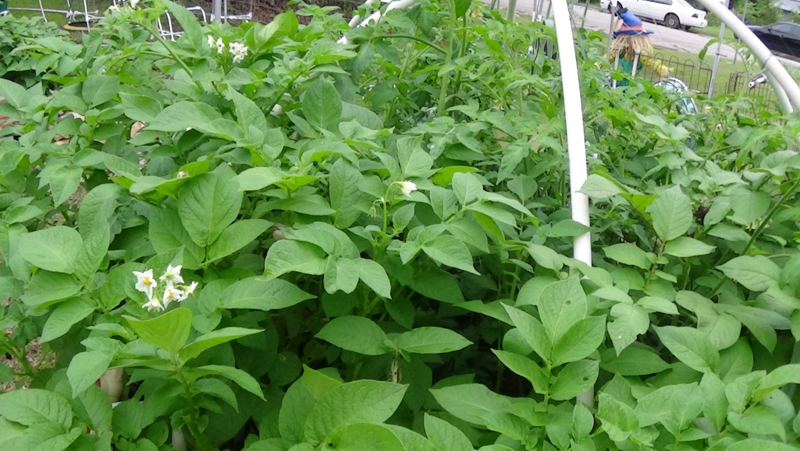 To me, keyhole gardens are the perfect way to grow crops, for several reasons:
To me, keyhole gardens are the perfect way to grow crops, for several reasons:
(1) Raised-bed keyhole gardens are easy on the back compared to traditional ground gardening.
(2) You can plant crops much closer together. I utilize a three-inch grid format generally. The internal basket feeds them so growth is phenomenal.
 (3) Water is conserved because you only water the garden area, and with moisture from the internal basket as a supplement, less water is needed.
(3) Water is conserved because you only water the garden area, and with moisture from the internal basket as a supplement, less water is needed.
(4) Weeding, if needed, is a breeze. First, you are not on your hands and knees, but the weeds pull up rather easily, as well.
(5) You control the soil.You determine what materials to use inside the main area of the keyhole garden, be it layers (like I use) of cardboard, paper, twigs, sticks, dried leaves, a little green material, and compost mixed with topsoil on as the upper layer. This year, the upper portion is mushroom compost mixed with a little bark mulch (to help with aeration).
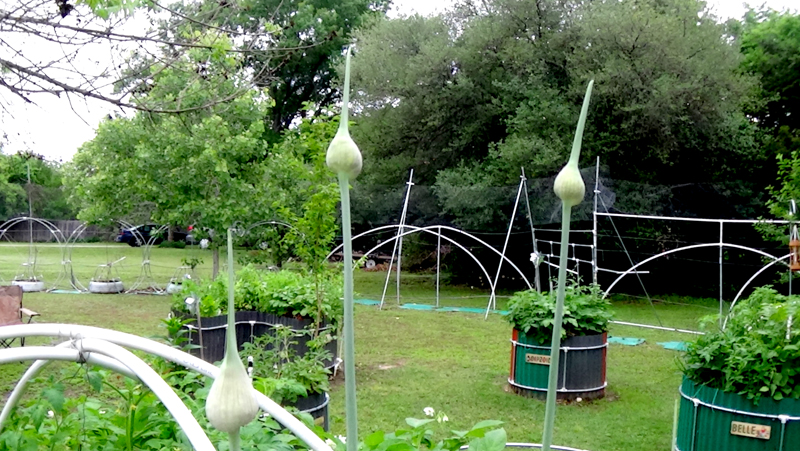 (6) You control when to harvest. Crops taste better and are exponentially more nourishing when harvested at their peak. Oftentimes, produce departments offer vegetables picked too early to ensure shelf life, which tends to diminish their taste. With your own keyhole garden, you pick the perfect time. There are a lot of Internet sites that describe the best time to harvest particular crops. In his book “Eat Your Greens,” David Kennedy describes the surprising power of home grown leaf crops, including some that most people are unaware are edible and very nourishing.
(6) You control when to harvest. Crops taste better and are exponentially more nourishing when harvested at their peak. Oftentimes, produce departments offer vegetables picked too early to ensure shelf life, which tends to diminish their taste. With your own keyhole garden, you pick the perfect time. There are a lot of Internet sites that describe the best time to harvest particular crops. In his book “Eat Your Greens,” David Kennedy describes the surprising power of home grown leaf crops, including some that most people are unaware are edible and very nourishing.
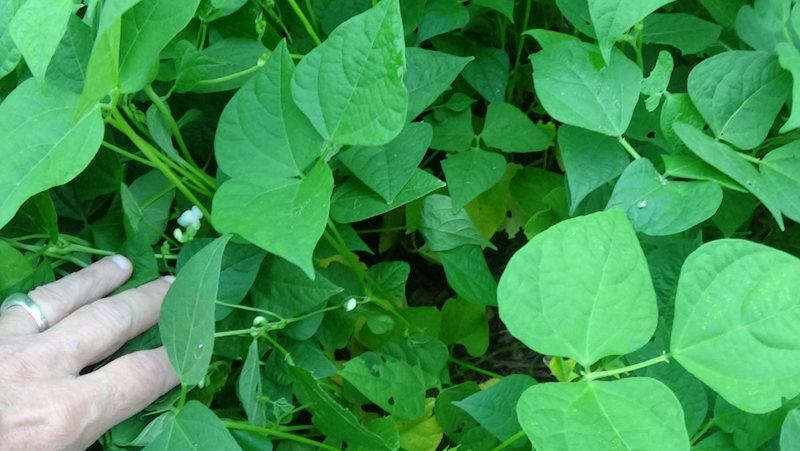 (7) The impact of flooding is less. I have known people who still do their crops on the ground but who often lose everything during a very heavy rainfall or a mini-flood. This is less likely to occur with a keyhole garden because the water does not stay on the surface where the crops are and they are less likely to wash away.
(7) The impact of flooding is less. I have known people who still do their crops on the ground but who often lose everything during a very heavy rainfall or a mini-flood. This is less likely to occur with a keyhole garden because the water does not stay on the surface where the crops are and they are less likely to wash away.
The advantages are many, beyond the seven listed here. Many have to do with the beauty of the crops and positive growth factors. About a year-and-a-half ago, I obtained several mulberry starts (about an inch wide and two inches tall). As an experiment I planted one in the ground near a keyhole garden and one inside the keyhole garden. The trunk of the one planted in the ground is currently about an inch in diameter, while the one inside the keyhole garden is about four inches in diameter. The one in the ground is about a third the size of the keyhole version and is not producing mulberries yet. The one inside the keyhole is filled with clusters of mulberries. That’s one example of the power of the keyhole garden.
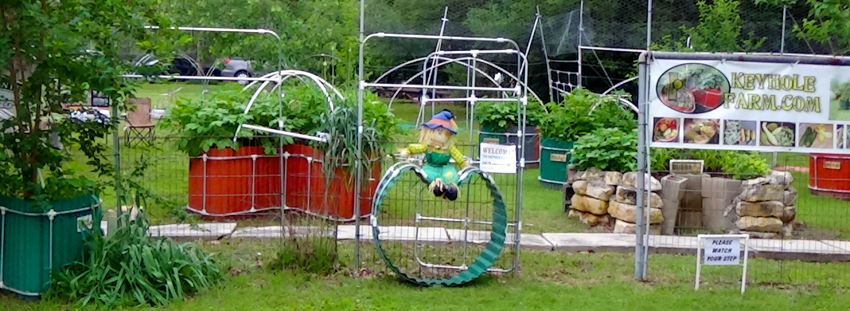 Anyway, I encourage you to get into keyhole gardening and if you have kids, teach them about the art and science of growing your own crops. It is something that will stay with them always, like riding a bike. Not only that, it’s an adventure and a challenge that you can share….one that reaps splendid benefits.
Anyway, I encourage you to get into keyhole gardening and if you have kids, teach them about the art and science of growing your own crops. It is something that will stay with them always, like riding a bike. Not only that, it’s an adventure and a challenge that you can share….one that reaps splendid benefits.